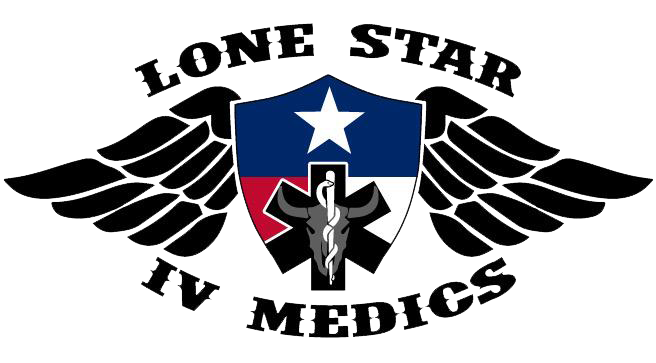New Client Special – One Free IV Add-in (Up to a $30 Value) Schedule Now
What You Should Know About Different Types of IV Fluids

5 Easy Ways to Drink More Water
September 21, 2020
IV Therapy 101
March 12, 2021Table of Contents
- IV Therapy 101
- Crystalloid and Colloid IV Fluids
- Hypotonic IV Solutions
- Hypertonic IV Solutions
- Isotonic IV Solutions
IV therapy provides an effective way to infuse vitamins, minerals, electrolytes, and medications into the bloodstream, so they start working right away. But to make that happen, you need high-quality IV fluids. And just as you choose different supplements and medications to tailor your IV to your specific health needs, you can also pick the type of IV fluid to get your desired results.
Your current health condition is the main determining factor for selecting your IV fluid. It’s important to tell your provider about any symptoms you’re experiencing as well as your health history to ensure the IV fluid is right for you. Certain health conditions call for certain IV fluids, which may not work as well for other health issues.
It’s helpful to understand the basics of IV therapy and the different fluids that are available, so you can make informed choices for your treatment.
IV Therapy 101
IV therapy is integral to helping you achieve homeostasis. That’s when your body’s fluid levels, oxygen, and electrolytes are in a harmonious balance, allowing you to function at your best for optimal health and wellness.
Unfortunately, it’s easy to fall out of homeostasis. Sickness, injury, dehydration, and other health conditions can throw your body out of balance, resulting in a loss of electrolytes and vitamin deficiencies. IV fluids can replenish your body with vitamins and electrolytes. The latter is especially important because electrolytes help your cells maintain osmosis, with fluid moving in and out of cells. IVs are fast-acting and effective, so you can regain homeostasis as quickly as possible.

Crystalloid and Colloid IV Fluids
IV bags fall into two different categories: Those containing crystalloid solutions and those with colloid fluids. The main difference between the two is how they react once they enter your body. Crystalloid solutions contain tiny particles that enter cells through their semipermeable membranes. Colloid solutions, on the other hand, have particles too large to pass those membranes so they remain in the bloodstream instead.
Crystalloid solutions are commonly used in IV therapy. They are readily available, affordable, allergy-free, and self-stable, making them an attractive option. There are three types of crystalloid solutions: hypotonic, hypertonic, and isotonic. These groups are defined by their type of osmotic function.
Hypotonic IV Solutions
Low levels of cellular fluid, which can result from conditions such as diabetes complications, need to be restored. A hypotonic solution travels from the bloodstream into the cells to increase fluids. There are several types of hypotonic IV fluids:
- 0.45% NaCl
The notable component of hypotonic solutions is sodium chlorine or saline. Hypotonic fluids are relatively low in sodium, so they’re used to treat patients with hypernatremia or high sodium chloride levels. This solution can fill the body with too much fluid, which may cause edemas or poor electrolyte levels. The 0.45% NaCl is not recommended for people with heart or renal failure.
- 0.33% NaCl
With a lower concentration of saline compared to 0.45% NaCl, this IV fluid helps people who need to retain water due to kidney dysfunction. However, it’s not advised to use this solution if you have severe kidney problems or heart issues; it can also increase your risk for pulmonary edemas.
- 0.225% NaCl
The low amount of saline in this IV fluid is often combined with dextrose, a type of glucose, and used for pediatric health care.
- 2.5% Dextrose in water
IV therapy is commonly used to combat dehydration, which can be caused by illness, hangovers, medications, chronic health conditions, or intense physical exertion. A 2.5% dextrose in water solution addresses dehydration, and it can also decrease potassium and sodium levels in the body.
Hypertonic IV Solutions
Instead of bringing water into cells, hypertonic fluids take excess water out. They have a higher sodium chloride level than hypotonic solutions, which makes them ideal for patients who need electrolytes to be re-balanced, but they’re not as good for people with dehydration. Too much fluid may lead to pulmonary edemas. Different hypertonic IV solutions include:
- 3% NaCl
- 5% NaCl
- Dextrose 5% in 0.45% NaCl
- Dextrose 5% in 0.9% NaCl
- Dextrose 5% in Lactated Ringer’s (Lactated Ringer’s consists of sodium chloride, potassium chloride, calcium chloride, and sodium lactate)
- 10% Dextrose in water (electrolyte free)
- 20% Dextrose in water
- 50% Dextrose in water
Isotonic IV Solutions
Unlike hypotonic and hypertonic, this type of IV fluid doesn’t move water in or out of cells but maintains an even balance between the two. It achieves this because its volume is similar to that of your blood plasma. The common isotonic IV solutions include:
- 0.9% NaCl
This is one of the most frequently used IV solutions, ideal for treating many types of dehydration. It’s also known as a normal saline solution.
- Lactated Ringer’s
Another common isotonic IV fluid, Lactated Ringer’s, is often used to treat victims of burns, traumatic injuries, or severe blood loss. An associated fluid is Ringer’s Solution, which doesn’t have lactate.
- 5% Dextrose in water
This calorie-dense fluid provides nourishment to help people who can’t consume enough food on their own. It also assists with kidney function. It’s worth noting that this solution is hypotonic as well as isotonic.
- PlasmaLyte
PlasmaLyte has similar electrolyte levels to blood plasma, so it can be used with red blood cells to treat patients.
The other category of IV solutions consists of colloid fluids. They expand blood volume because they remain in the bloodstream, not the cells. Colloids are good for people who need extra nourishment. For instance, albumin, a liver-produced protein, is present in two of the solutions. These IVs are also ideal for patients who can’t take on extra fluids, such as those at risk of pulmonary edemas. Colloid IVs include the following:
- Albumin 5%
- Albumin 25%
- Hetastarch
- Hespan
- Low-molecular-weight dextran
- High-molecular weight dextran
Trust the Experts at Lone Star IV Medics
Our team of medical professionals works with you to find the best IV fluid to get superior results. We also answer all of your questions thanks to their broad range of experience.
We offer all of our IV packages at affordable prices and provide our services at your home, office, or any other location that’s convenient for you. Book an appointment with us today.




